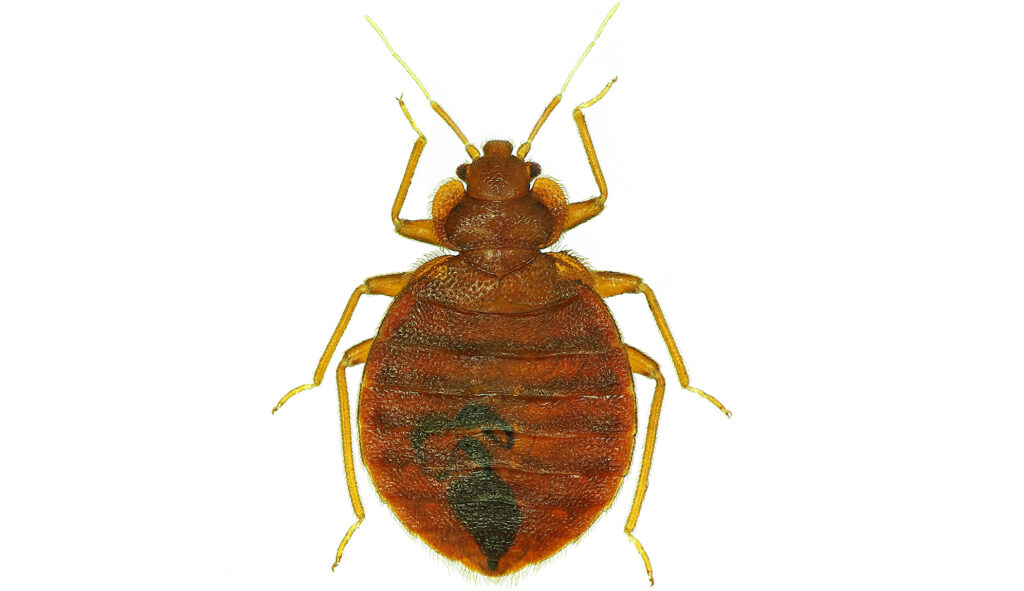Bed Bugs

Origins and distribution
Found worldwide and common in the UK.
Characteristics
Adult bed bugs are dark brown mahogany in colour, around 6 – 8 mm in length and look like an apple seed in appearance, with the nymphs resembling the adults but being much smaller and lighter in colour. Newly emerged nymphs are opaque until feeding. They are flattish oval in appearance with the legs clearly visible with simple well developed antennae and compound eyes.
Breeding
Bed bugs mate with the male penetrating the female through the abdomen as the female has no genital opening. Females can lay anything up to 200 to 500 eggs in her lifetime at a rate of 1 – 5 per day. Eggs only hatch above a temperature of 13°C and are white about 1 mm long. Nymphs emerge and go through a series of moults (5 in total) before reaching adulthood, which can take 6 – 8 weeks. Adults are resistant to starvation and can live anything up to 12 months without feeding.
Habits
Bed bugs are nocturnal with all stages feeding on mammalian blood. During the day they reside in their harbourage which is often a crack or crevice within the bed or furniture, skirting boards, cracks in walls or under wallpaper. Bed bugs feed every 2 – 3 days biting the host and feeding for anything between 3 – 10 minutes.
Signs of activity
- Bites to the body.
- Black faecal marks or spotting around the harbourage area.
- Blood spots on bed linen.
- Shed moulted skins.
Importance
Bed bugs can cause a lot of anxiety and sleeplessness; their bites can cause a lot of skin irritation and severe allergic reaction. Bed bugs have not been known to transmit any disease organisms. Often hitch a ride in luggage and often associated, but not limited to hotels, hostels, social housing etc. If left, infestations can become entrenched into the fabric of the building becoming more problematic.
How we control Bed Bugs
There is no set way of dealing with bed bug infestations as they can be very intensive and complex. We employ a number of methods, which can be used together in a multi-pronged attack. These consist of mechanical removal, such as using a vacuum cleaner to remove insects and eggs where possible. Also applying residual insecticide to cracks, crevices and other harbourages where it kills upon contact, or remaining active for a limited period afterwards contaminating insects crawling over the treated surface afterwards.
Other measures involve the use of Cryonite© or steam as a non-toxic alternative and to kill the egg stage, as well as barriers such as mattress and pillow encasements and the placement of traps. We are able to provide routine inspection services for properties such as hotels where maintaining the business reputation is essential.


















